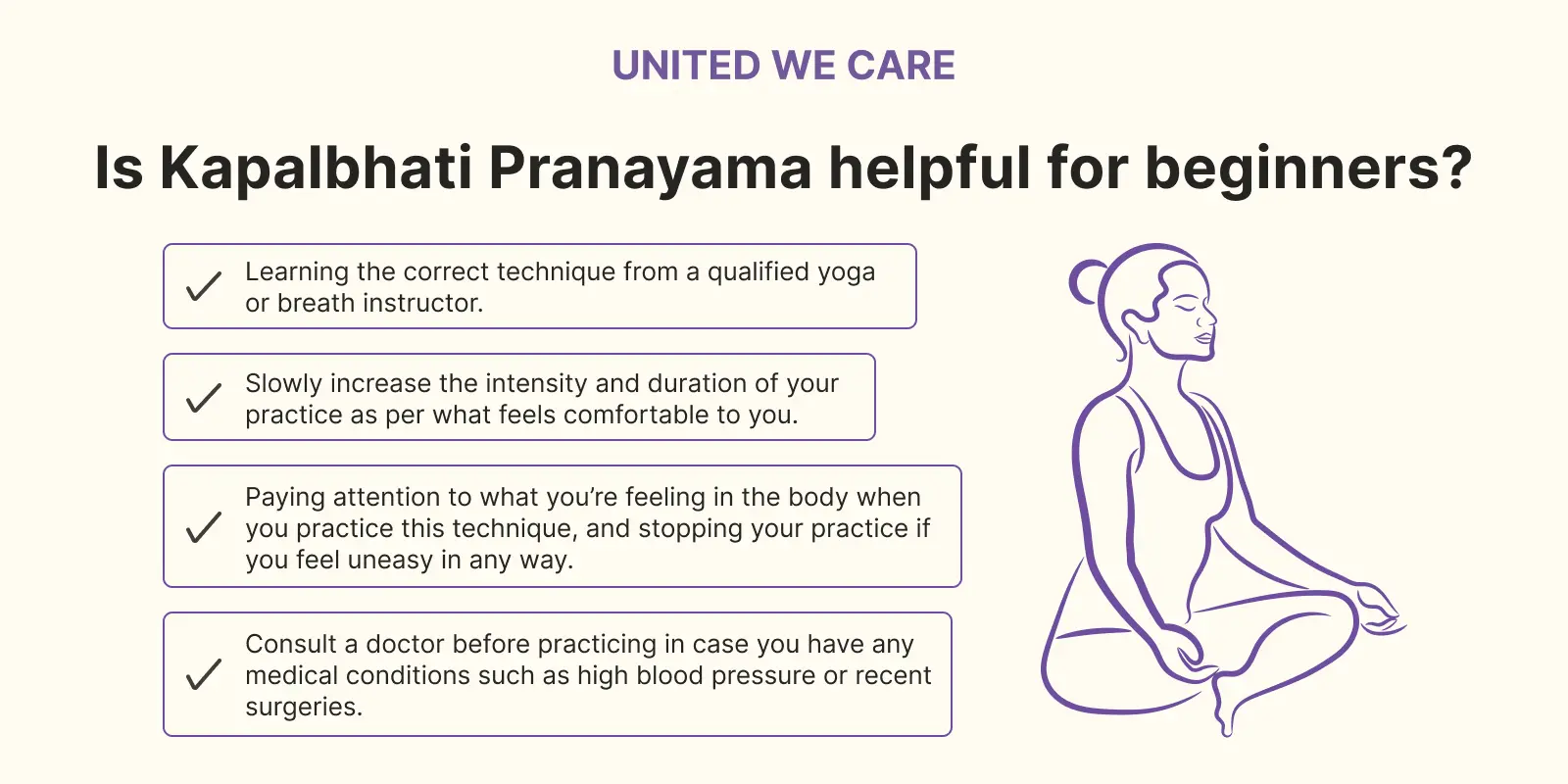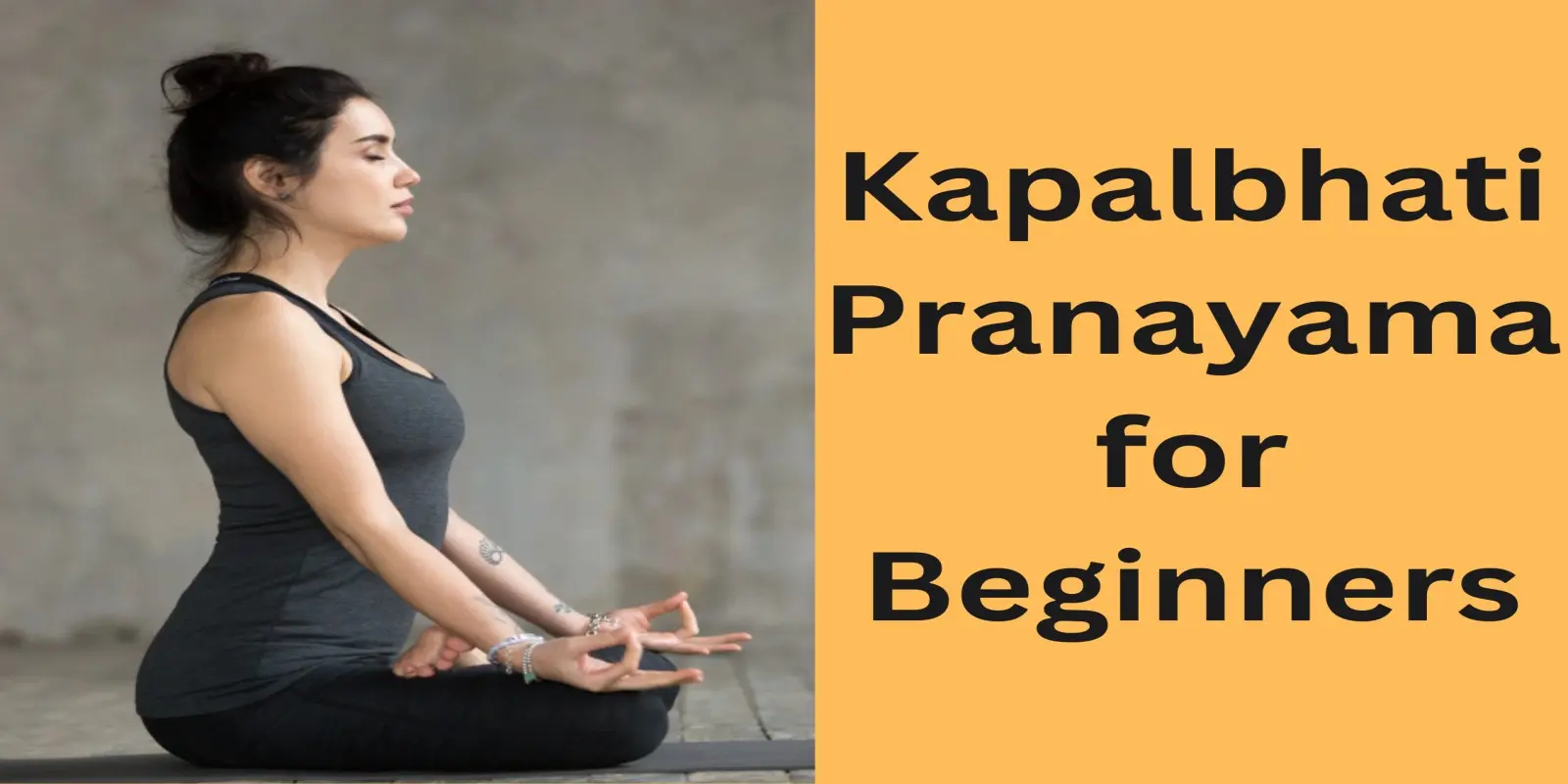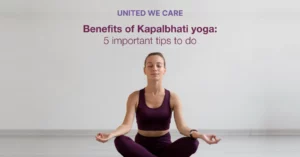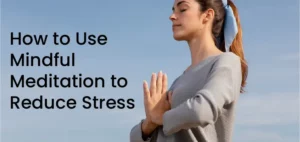Introduction
Have you ever noticed the rhythm of your breath? When you’re stressed, you might find yourself breathing faster and shallower as compared to when you’re feeling relaxed. Your physical and mental state affects the way you breathe, and how you breathe also affects your overall well-being. While breath in itself is an automatic function of the body, you can learn to control it in a way that’s optimal for your well-being. There are different ways to control your breath depending on the kind of balance and wellness you seek. Some breathing exercises focus on slow and deep breathing for better relaxation, while some quicker breathing exercises focus on giving you an energy boost, such as kapalbhati pranayama for beginners.
Our autonomic nervous system consists of sympathetic and parasympathetic branches. The parasympathetic nervous system (PNS) is responsible for helping us calm down as it aids in rest and digestion. So, if you want to activate the PNS, you must take slow and deep breaths, which in turn will help you manage stress and feel relaxed.
The sympathetic nervous system (SNS), on the other hand, is referred to as the body’s “fight or flight” system. This means that it prepares us to take on challenges and face stressors or run away from them. Consciously activating your SNS with rapid breathing techniques can help you improve your brain function, i.e., more clarity in thinking and better concentration. This beneficial intentional rapid breathing is not to be confused with the automatic chronic rapid breathing as a stress response.
What is Kapalbhati Pranayama
In Sanskrit, kapal means forehead or skull, and bhati means shining or illuminating. Hence, kapalbhati pranayama literally means skull shining breath. It is a traditional yogic breathing technique aimed at cleansing your body and energizing your mind.
When you’re breathing normally, you may find that you inhale more actively than you exhale. When practicing kapalbhati pranayama, you do the exact opposite. Your focus is on exhalation, so you exhale actively and inhale passively.
Kapalbhati pranayama involves a series of rapid exhalations through the nose with force, which contracts the muscles of the abdomen. The purpose of this practice is to clean out the lungs and respiratory system, improve oxygen supply to the body, and strengthen the core muscles of the stomach.[1]
Is Kapalbhati Pranayama helpful for beginners?
Kapalbhati pranayama is beneficial for anyone who practices. However, as a beginner, you must consider certain factors to avoid any potential negative effects, such as:

- Learning the correct technique from a qualified yoga or breath instructor
- Slowly increase the intensity and duration of your practice as per what feels comfortable to you
- Paying attention to what you’re feeling in the body when you practice this technique, and stopping your practice if you feel uneasy in any way
- Consult a doctor before practicing in case you have any medical conditions such as high blood pressure or recent surgeries.
Ultimately, as a beginner, you must practice this technique under the guidance of an experienced practitioner and find your own pace to progress while listening to the needs of your own body.
How to do Kapalbhati for beginners?
Kapalbhati pranayama is a powerful practice, and you should do it with proper technique. While it is best to learn this technique from a qualified professional, you can try this step-by-step guide to begin while taking the precautions mentioned above:
- Practice this technique on an empty stomach in the morning or leave a gap of at least two to three hours if practicing after a meal.
- Choose a peaceful and comfortable environment for yourself. Turn off or keep away from all digital distractions.
- Sit on a chair or the floor, whatever is most comfortable for you. Make sure to keep your spine erect, and palms relaxed over your knees.
- Prepare yourself for the practice by taking a few slow, deep breaths.
- Start with the first round of kapalbhati by inhaling normally, followed by a rapid exhalation with force. Your focus should only be on exhalation, and you must let the inhalation happen automatically and passively.
- Don’t rush the practice. Keep your pace slow and get comfortable with the practice. One exhalation per second is a good pace for beginners. Find your rhythm and keep it steady.
- To finish one round of this practice, do ten such kapalbhati breaths.
- Then, take a one-minute break and check in with yourself as to how you’re feeling. If there’s any uneasiness, stop your practice for the day.
- If you’re feeling comfortable, you may do one more round of this practice.
- Once you’re done with your planned practice, take a few minutes to return to your natural breath and just be present with yourself. Feel the energy and sense of clarity taking over you and prepare to take on the day with that.
Remember: You must increase the duration and intensity of your practice only gradually over a few weeks.
Benefits of Kapalbhati Pranayama
Practicing kapalbhati pranayama has proven to have positive effects such as:
- It can clear the mucus from your airways and improve your lung capacity. The increased exchange of oxygen and carbon dioxide can lead to more release of carbon dioxide from your blood, hence detoxifying your body.
- Your heart rate increases during the practice, which can improve circulation throughout your body, and especially your abdomen, due to the contractions.
- It activates your SNS, leading to more energy and focus. When you practice it rhythmically, it can also activate your PNS, hence making you feel more balanced.
- More oxygen in your blood can enhance cerebral circulation, hence bringing you more mental clarity and increased focus.[3]
Conclusion
Kapalbhati pranayama is a dynamic breathing technique that can help you feel more energetic physically and bring mental clarity. It is best to practice this technique under the guidance of a qualified professional. However, it is possible to learn this technique by yourself as long as you take the required precautions. There are many benefits to practicing kapalbhati pranayama, especially for your respiratory, circulatory, and nervous systems. It can also help improve your cognition. Explore United We Care’s self-paced courses to learn more about this and other breathing techniques and practice them correctly.
References:
[1] V. Malhotra, D. Javed, S. Wakode, R. Bharshankar, N. Soni, and P. K. Porter, “Study of immediate neurological and autonomic changes during kapalbhati pranayama in yoga practitioners,” Journal of Family Medicine and Primary Care, vol. 11, no. 2, pp. 720–727, 2022. [Online]. Available: https://doi.org/10.4103/jfmpc.jfmpc_1662_21. Accessed on: Nov. 5, 2023
[2] Art of Living, “Skull Shining Breath – Kapal Bhati,” Art of Living. [Online]. Available: https://www.artofliving.org/yoga/breathing-techniques/skull-shining-breath-kapal-bhati. Accessed on: Nov. 5, 2023
[3] R. Gupta, “A Review Article on Kapalabhati Pranayama,” 2015. [Online]. Available: https://www.researchgate.net/publication/297714501_A_Review_Article_on_Kapalabhati_Pranayama. Accessed on: Nov. 5, 2023










